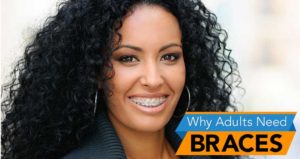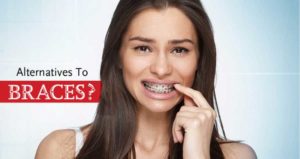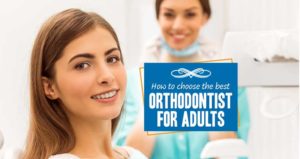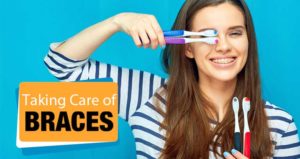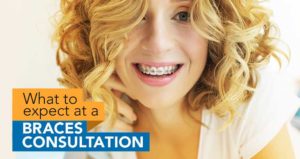chapter
01
Why Adults Need Braces
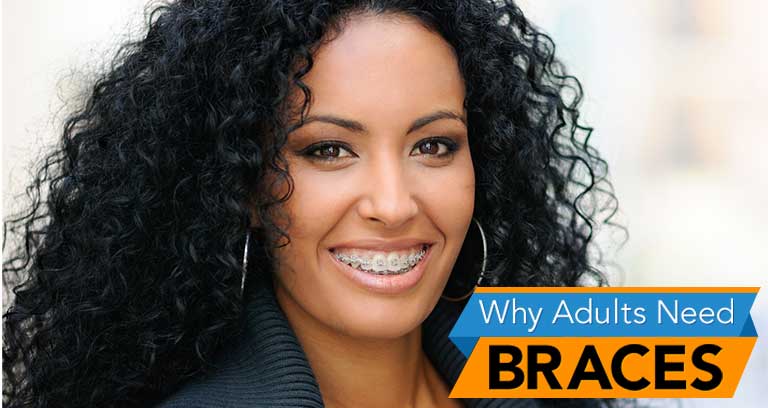
A straight, healthy smile can transform your life, both personally and professionally. With nearly 1 in 4 orthodontic patients being adults, the trend of adult braces is on the rise.
If you’ve been considering improving your smile and oral health, this blog post will provide you with valuable insights into the reasons, types, and process of getting adult braces. Get ready to embark on a journey towards a confident, radiant smile that will surely brighten your life.
Why Adults Need Braces
Adult braces are becoming increasingly popular, with more and more people seeking orthodontic treatment to improve their smiles and overall oral health. Some reasons why adults are opting for braces include:
Not having the opportunity to get braces when they were younger due to financial constraints or other reasons
Being unhappy with the results of previous orthodontic treatment and wanting to achieve the perfect smile they’ve always desired
Wanting to improve their oral health and address issues such as misaligned teeth or bite problems
With one-third of American adults being unhappy with their smiles, it’s no surprise that adult braces are in high demand.
Adults turn to braces for a variety of reasons, from enhancing their appearance to reaping health benefits and even boosting self-confidence. We’ll explore these motivations further in the upcoming sections, shedding light on how adult braces can bring positive changes to your life.
Aesthetic Improvement
A beautiful, straight smile can make a world of difference in your personal and professional life. Studies have shown that individuals with crooked teeth are often perceived as being unsuccessful, which can impact not only their personal life but also their careers. Braces can help rectify misaligned teeth, resulting in a more organic, attractive smile that leaves a lasting impression on those around you.
Furthermore, braces have the added advantage of correcting speech issues caused by misaligned teeth. When you wear braces, the result is not just an elevation in self-esteem but also a boost in your communication skills, fostering a more positive image of yourself in the minds of others.
Health Benefits
While the aesthetic benefits of straight teeth are undoubtedly appealing, braces also offer significant health advantages. Adult braces can prevent dental issues caused by misaligned teeth and unhealthy bites, such as excessive wear, gum surgery, and root canals. When teeth are misaligned, maintaining oral hygiene can become a challenge, thereby elevating the risk of tooth decay and gum disease.
Braces can also improve your digestion by facilitating the process of chewing food and breaking it down into smaller pieces prior to entering the digestive system. This may lead to improved digestion and fewer stomach issues. Furthermore, braces can help address the sources of bad breath by effectively cleaning teeth. Overall, braces not only enhance your smile but also contribute to a healthier mouth and body.
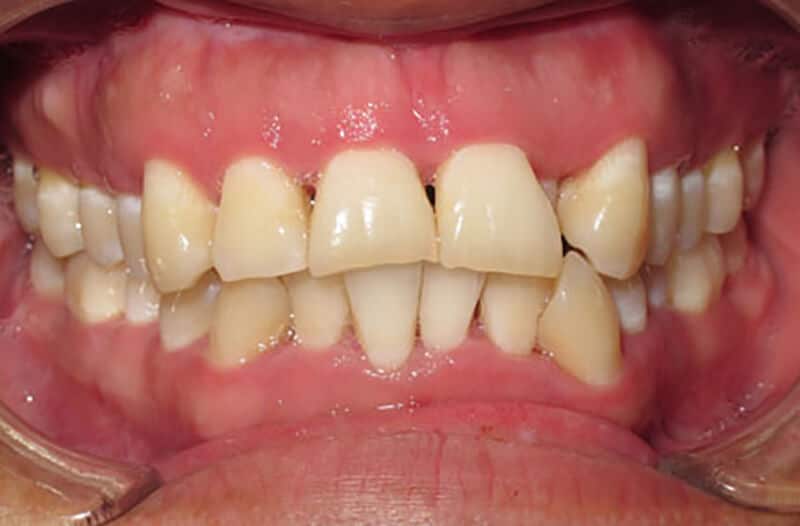
Unstable Bites Causing Tooth Damage
Tooth damage can result from unstable bites, since misaligned teeth are susceptible to wear and tear, potentially triggering dental emergencies. Braces can help correct this issue by guiding teeth into a better formation using slight pressure, allowing teeth to move gradually and adjust accordingly. This process not only prevents further complications but also makes eating and drinking more comfortable, thus decreasing the probability of biting one’s tongue or cheek while speaking.
Adults undergoing adult orthodontics often encounter hurdles like insufficient mouth space for teeth movement or dealing with worn-out teeth. However, with expert orthodontic treatment, these challenges can be addressed, ensuring that your bite is functionally sound and your teeth are protected from further damage. By exploring various orthodontic treatment options, you can find the best solution for your specific needs.
Jaw Pain from an Unstable Bite
An unstable bite, caused by misaligned teeth, might result in jaw pain and discomfort. Symptoms of this condition may include popping or discomfort in the jaw, as well as sensitivity, chronic headaches, and earaches. Some potential causes of jaw pain include an injury to the jaw, certain illnesses or conditions such as arthritis, grinding or clenching of teeth, and temporomandibular joint and muscle disorder (TMD).
Braces can help rectify unstable bites, which may contribute to jaw pain and potentially avert further complications. By aligning your teeth properly, braces can alleviate jaw pain and improve your overall comfort and quality of life.
Enhanced Confidence and Quality of Life

The benefits of getting braces as an adult include:
Improved aesthetics and oral health
Increased self-esteem and confidence
Better quality of life and improved mental well-being
Feeling more comfortable and at ease in social situations
Moreover, the psychological benefits of adult braces can improve your overall mental state, as the newfound confidence in your smile can positively influence various aspects of your life, from personal relationships to career success. Ultimately, adult braces can be a life-changing investment in your happiness and well-being.
Types of Braces for Adults

Having discussed why adults opt for braces, we now turn our attention to the different kinds of braces that adults can choose from. Each comes with its own unique benefits, designed to cater to a range of preferences and requirements. In this section, we will discuss traditional metal braces, ceramic braces, and Invisalign aligners, providing you with a comprehensive understanding of your options.
Traditional Metal Braces
Traditional metal braces, also known as traditional braces, are an effective and cost-efficient solution for numerous individuals seeking orthodontic treatment. Made from stainless steel bands, brackets, and wires, metal braces are capable of treating:
Severe or mild tooth crowding
The majority of bite abnormalities
Spaced teeth
Other orthodontic issues
The clear braces, including lingual braces, are securely attached to the front of the teeth, and a wire is threaded through them and adjusted periodically to gradually move the teeth into the desired position.
Although metal braces have been around for a long time, advancements in orthodontic technology have made them more compact and streamlined than in the past. The treatment process and timeline for traditional metal braces vary depending on the specific requirements of the individual and the severity of the dental issue being addressed, with the duration of treatment estimated to range from six months to two years.
Ceramic Braces
For those seeking a more discreet option, ceramic braces may be the perfect choice. Composed of clear materials or tooth-colored brackets, ceramic braces are less conspicuous than metal braces, making them a popular choice for adults and teenagers who are concerned about the appearance of their braces. However, it’s important to note that ceramic braces:
are more fragile than metal braces
may require more frequent adjustments
can be more expensive
may stain easily if not properly cared for
These factors should be considered when deciding if ceramic braces are the right option for you. Additionally, ceramic braces may not be suitable for individuals engaging in contact sports.
Ceramic braces function similarly to metal braces in terms of their ability to correct dental issues. While they may be slightly more expensive than traditional metal braces, the discreet appearance and functionality make them a popular option for adults seeking orthodontic treatment.
Invisalign Aligners
Invisalign aligners have emerged as a popular choice for adult orthodontic treatment due to their clear, removable, and convenient design. Invisalign involves the use of clear, plastic aligners. These aligners work by implementing tiny alignment shifts over time, and eventually move the teeth to the desired position. These aligners are nearly invisible and can be removed for eating, drinking, and oral hygiene, making them a versatile and accommodating option for busy adults.
The treatment process with Invisalign aligners is tailored to the specific needs of the patient, with the aligners being replaced every couple of weeks to ensure continued progress. While Invisalign may not be suitable for all types of dental issues, they are an excellent option for those seeking a discreet and flexible orthodontic solution.
Treatment Process and Timeline

Before you embark on your journey towards a straighter, more confident smile, it’s vital to understand the treatment process and timeline for adult braces. The process begins with an initial consultation to assess your dental health and determine the best course of action for your specific needs.
Initial Consultation
During the initial consultation, your orthodontist will:
Evaluate the condition of your teeth
Discuss any issues that may require orthodontic intervention
Provide treatment recommendations and options tailored to your needs
This will ensure that you can make an informed decision about your orthodontic journey.
Additionally, the orthodontist will discuss the following:
The associated costs of your chosen treatment option
The anticipated timelines for your treatment
How to set realistic expectations
How to plan accordingly for a smooth and successful orthodontic experience.
Cost and Insurance Considerations

Cost and insurance considerations are crucial factors to keep in mind while contemplating adult braces. While orthodontic treatment can be a significant investment, there are options available to help make it more affordable and accessible, including orthodontic insurance coverage and payment plans.
Insurance Coverage
Certain dental insurance plans might offer coverage for adult orthodontic treatment, but the extent of coverage varies, depending on the provider and specific plan details. It’s essential to check with your insurance provider to determine the extent of your coverage and how it may apply to your chosen treatment option. If your dental insurance does cover adult braces, be sure to schedule a free consultation with an orthodontist to estimate your coverage and file claims on your behalf.
Keep in mind that dental insurance may only cover certain types of braces or may have limitations on the amount of coverage provided. Be sure to familiarize yourself with your insurance policy’s specific terms and conditions to avoid any surprises during your orthodontic journey.
Payment Plans and Financing Options
Beyond examining dental insurance coverage, it is advisable to discuss available payment options with your orthodontist. Many orthodontists offer payment plans that allow you to make regular installments to cover the cost of your treatment. Examples of such plans include monthly payment plans through CareCredit, financing plans with monthly payments over a certain period, and low- or no-interest financing options. This can help make adult braces more affordable and accessible, even for those without insurance coverage.
Additionally, funds from a health savings account (HSA) or flexible savings account (FSA) can be used to cover the cost of orthodontic treatments. This can be a valuable resource for those looking to finance their orthodontic journey without breaking the bank.
Common Misconceptions About Adult Braces
Being aware of common misconceptions about adult braces is essential as they may influence your decision-making process. In this section, we will debunk a few of these misconceptions, including age limitations, treatment duration, and the belief that braces are solely for cosmetic purposes.
Age Limitations
Contrary to widespread belief, braces do not have an age limit. Adults of any age can benefit from orthodontic treatment just as much as younger patients. In fact, with advancements in orthodontic technology and an increasing variety of treatment options available, adult braces have become more comfortable and aesthetically pleasing than ever before.
Don’t let the misconception of age limitations hold you back from achieving a healthier, more confident smile.
Treatment Duration
Another common misconception is that the duration of orthodontic treatment for adults is significantly longer than for younger patients. Although the treatment duration varies depending on the individual case and the severity of the dental issue, technological advancements have expedited and streamlined the process.
On average, adult braces treatment can range from one to three years, with some patients even seeing notable results within 4 to 6 months. It’s crucial to remember that every case is unique, and your orthodontist will provide you with a personalized treatment plan and timeline based on your specific needs.
Cosmetic vs. Health Benefits
While braces are often linked with cosmetic enhancements, it’s equally important to acknowledge the health benefits that come with orthodontic treatment. Braces not only enhance the appearance of your smile but also contribute to a healthier mouth and body by preventing dental issues caused by misaligned teeth and unhealthy bites.
In addition to the aesthetic advantages, braces can help improve your overall oral health, making it easier to maintain proper hygiene and prevent tooth decay and gum disease. By correcting dental issues and promoting a healthier mouth, braces can greatly contribute to your overall well-being and quality of life.
Summary
With record numbers of adults getting braces, it’s more clear than ever that it’s never too late to make this investment in your health, your confidence, and your happiness.
There are comfortable, nice-looking , or even nearly invisible treatment options available that can fit any lifestyle…
With adult braces becoming more affordable year by year, there’s no reason to let your smile hold you back!
Now that you better understand why adults need braces, we’ll discuss the alternative options adults have to the traditional metal braces of the past.
Read Chapter 2 to find out more!
Schedule a Free Adult Braces Consultation
You can schedule a 100% free consultation with Premier Orthodontics to find out:
At your initial exam and consultation you’ll discover:


